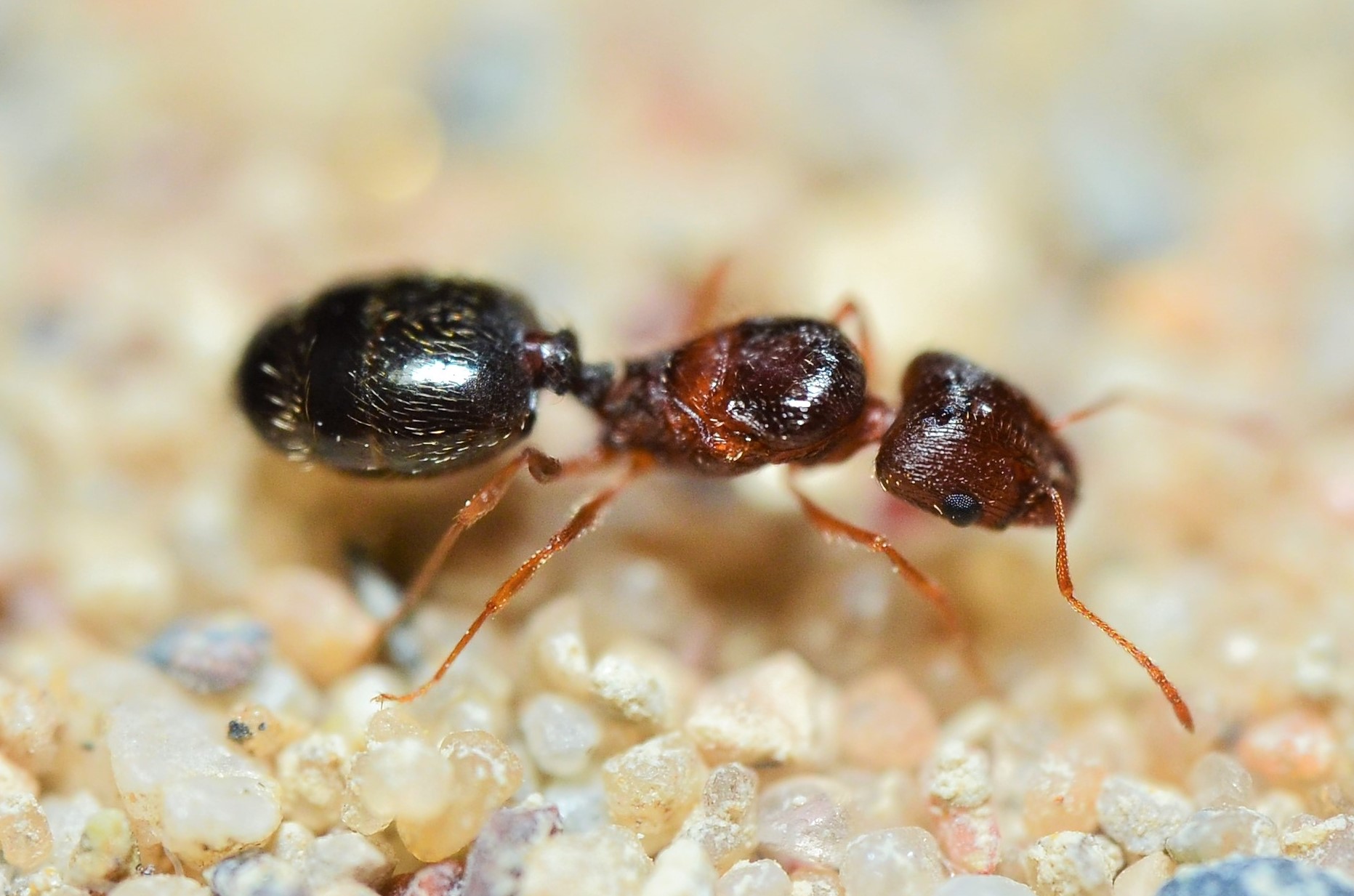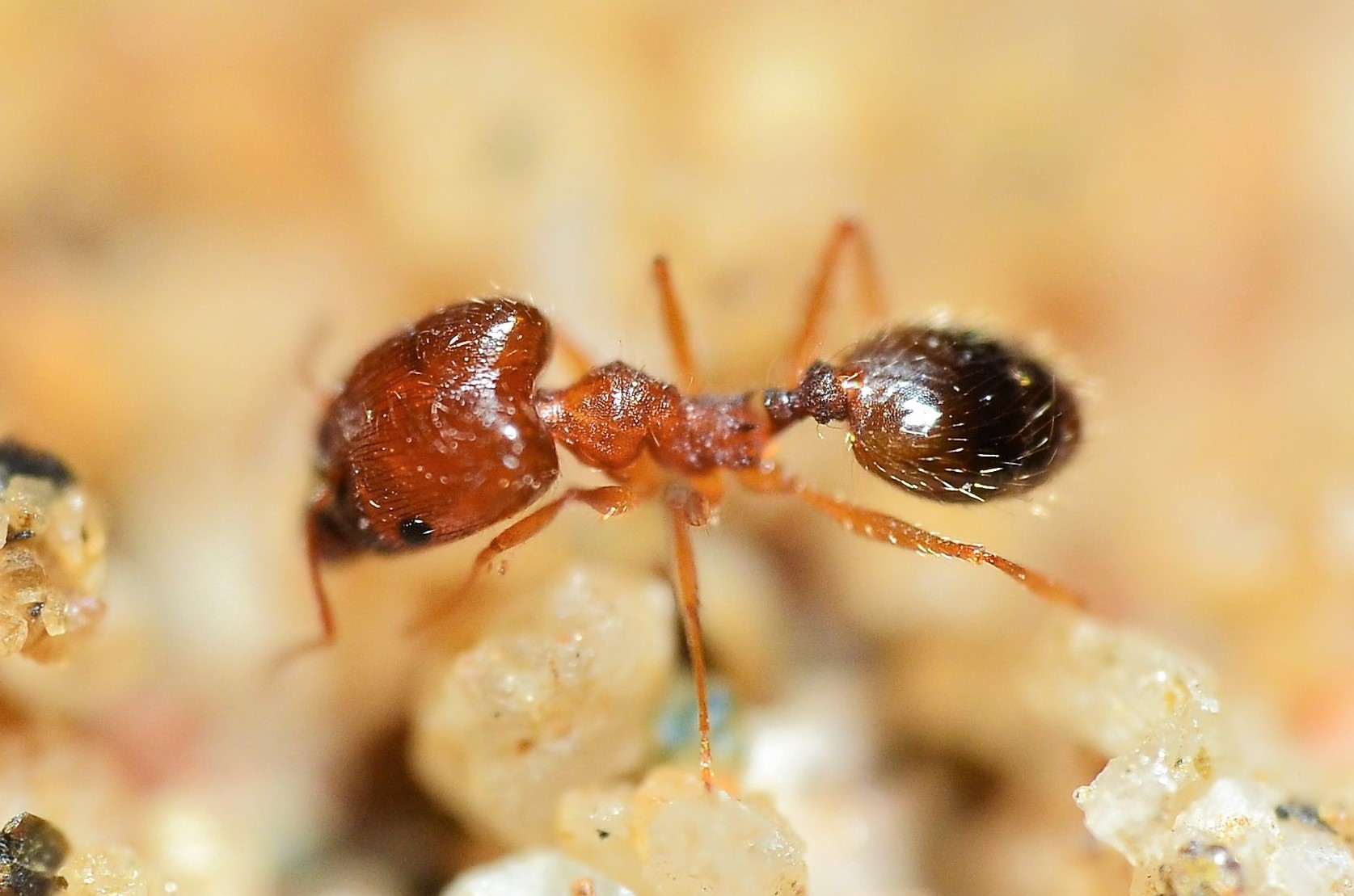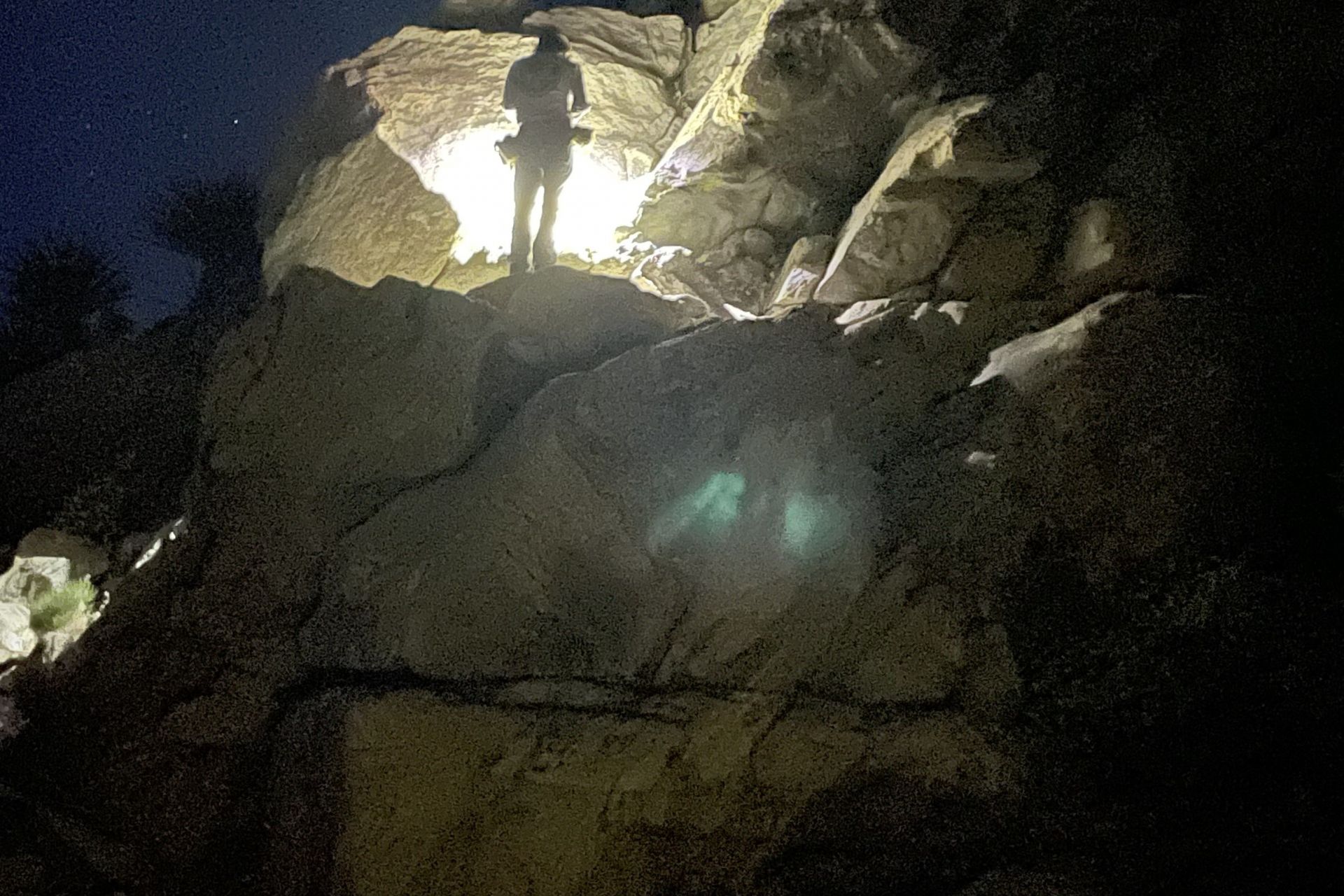Those are all handheld single-shot pictures. I only use photostacking for specimens.
- Formiculture.com
- Forums
- Gallery
- Members
- Member Map
- Chat

Those are all handheld single-shot pictures. I only use photostacking for specimens.
Here's another "rare" ant, seems to be the only thing I post now, haha.
Pheidole clydei.


P. clydei is pretty neat, it nests strictly within laminar cracks in massive boulders and rocky canyon walls, and due to this the colonies are far separated from the soil below the rocks. What's more interesting is that they live in extremely low-elevation, harsh desert areas such as Death Valley, high-elevation mountains that receive snow, and pretty much everywhere in between. I theorize it's due to the inner of the rocks not varying much in moisture or temperature despite drastic differences in outside conditions. Furthermore, like the genus is named after, P. clydei is a facultative granivore and often take in seeds during their nearly-24 hour long foraging period. Foraging seems to only cease when it gets too hot or too cold, with no preference to time of day. Minors do all of the foraging and majors rarely leave the nest - their main job appears to only be defense and to aid in breaking down larger food items. Colony entrances usually are bare and lack any midden or tumulus, however sometimes the rock is shaped just right for a small bit of tumulus and/or midden to be present. Colonies only have a single entrance and pressumable the soil in the crack is excavated out deeper and deeper into the rock. It's hard to estimate colony size even after observing dozens of colonies for days at a time, but it seems to be around one to three thousand workers. It also is presumed that colonies are haplometrotic. The gyne photographed was found after a nuptial flight while she was roaming a boulder searching for a crack to nest in.
Edit: Here's a picture of one of the various areas I surveyed colonies in.

Edited by ReignofRage, May 5 2024 - 3:28 PM.
Here this guys!? We can finally mercilessly kill ants!Someone should make a small ant war by putting exactly 1 gram of of an ant species into a bowl and then putting exactly 1 gram of a different ant species. This looks like a fair battle
Man... Some people need to learn that creatures on Earth aren't playthings to us humans.
Bro literally says that creatures on Earth arent playthings to us humans......
This guy is Keeper of...
(2) Parakeets
(2) Peppered Corydoras
(4) Neon Tetras
(1) Hermit Crab
(100-300) Mealworms
(1) Tetramorium sp. E
(1) Dormymyrmex bicolor
(1) Dormymyrmex insanus
(1) Solenopsis invicta
(1) Formica fusca
(1) Lasius neoniger
(1) Crematogaster cerasi
(1) Myrmecocystus testacus. ![]()
"I am here on Earth, and I am only a speck of sand in the desert, a blade of grass in a field. I am no greater than any one of these busy ants who build for each other's comfort. " - King Solomon
Currently keeping: Myrmecocystus Depilis, Pogonomyrmex Rugosus
Wishlist: Camponotus Ocreatus
Here's another "rare" ant, seems to be the only thing I post now, haha.
Pheidole clydei.
P. clydei is pretty neat, it nests strictly within laminar cracks in massive boulders and rocky canyon walls, and due to this the colonies are far separated from the soil below the rocks. What's more interesting is that they live in extremely low-elevation, harsh desert areas such as Death Valley, high-elevation mountains that receive snow, and pretty much everywhere in between. I theorize it's due to the inner of the rocks not varying much in moisture or temperature despite drastic differences in outside conditions. Furthermore, like the genus is named after, P. clydei is a facultative granivore and often take in seeds during their nearly-24 hour long foraging period. Foraging seems to only cease when it gets too hot or too cold, with no preference to time of day. Minors do all of the foraging and majors rarely leave the nest - their main job appears to only be defense and to aid in breaking down larger food items. Colony entrances usually are bare and lack any midden or tumulus, however sometimes the rock is shaped just right for a small bit of tumulus and/or midden to be present. Colonies only have a single entrance and pressumable the soil in the crack is excavated out deeper and deeper into the rock. It's hard to estimate colony size even after observing dozens of colonies for days at a time, but it seems to be around one to three thousand workers. It also is presumed that colonies are haplometrotic. The gyne photographed was found after a nuptial flight while she was roaming a boulder searching for a crack to nest in.
Edit: Here's a picture of one of the various areas I surveyed colonies in.
Awesome pictures, you are so lucky
I used the photo of the Camponotus species as a 4-H project; it's going to state fair!
my duloticus queen is lighter. temnothorax americanus maybeTemnothorax duloticus (I think) in an acorn top.




Edited by 100lols, July 28 2023 - 10:44 PM.
Myrmoteras binghamii worker caught a fruit fly.
Wow, they are really small. Nice pics!
Edited by Voidley, October 6 2023 - 7:28 PM.
Ochetellus glaber repletes nesting in my garden retaining wall, photographed on my Samsung Galaxy se20. Sorry the photo is on its side.
Nice shot. I suggest getting a good clip on macro lens for your phone for even better close ups. This one works very well: https://www.amazon.c...ob_b_asin_titleOchetellus glaber repletes nesting in my garden retaining wall, photographed on my Samsung Galaxy se20. Sorry the photo is on its side.
0 members, 1 guests, 0 anonymous users